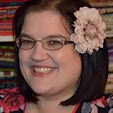You are thinking of investing in a new machine, so what do you do....you ask me. That is perfectly acceptable as I demonstrate a lot of machines, but it is like asking me what colour shirt you should wear tomorrow - there are just so many options that I need more information! So here are some questions you need to ask yourself before you ask anyone else.
- What is your budget? You seriously need to consider what you can afford to spend on your machine. There will be no point in looking at a high end, high value machine if your pocket just wont stretch to it. You will just be setting yourself up for disappointment.
- what do you want to do? Buy the machine for the sewer that you WANT to be. This is a major investment and you dont want to buy a machine that you will outgrow in 6 months. Also think about how often you plan to use it; if it is an occasional machine, you may be better off with a budget machine.
- How many stitches do you think you will use. It is a good idea to have a selection of standard and utility stitches. You may find you'll need them as your skills increase.
- Can you move the needle position? This will enable you to perfectly position your rows of stitches for the project that you are completing. It can be such a pain when you can't move the needle, but it's a definite benefit when you can.
- Feed Dogs. These are the teeth keeping your fabric moving smoothly through your machine. If you fancy a go at free motion stitching you'll need to disengage these teeth. Many machines allow you to drop the feed dogs, others, you may need to cover with a plate ( usually included). I personally prefer to be able to drop them, I find the plates can catch on my fabric and restrict the free flow of the fabric through the machine.
- is weight/size an issue? Lightweight machines are now composed of lighter weight materials than those manufactured in previous years. For this reason, you can buy a small, compact, lightweight portable model that provides you with excellent quality sewing action, speed and durability without breaking the bank. This is fantastic news if you plan to carry your machine up a lot of stairs! Also think about the size of your proposed machine. A large machine with a large throat is fantastic for working on a large quilt, but not if you work in a small space or have a small budget. There is always a compromise to be made.
- extra feet - what does it come with and how much do extra feet cost? Feet to look for - If you are a quilter, a machine that comes with a walking foot, embroidery foot and a 1/4 foot is a real bonus as these can be expensive to purchase separately. If you are a dressmaker, then a blind hem foot and an overcasting foot are useful. Most machines come with a zipper foot and bottonhole foot as standard. An extension table is very useful, giving you extra work space, and a hard dust cover is a bonus, though lower value machines normally only come with a soft cover.
- Do you feel that you need a particular brand. It may be a good idea to think about why you are attached to this brand. Is it because it has a reputation for quality, or durability. If so, check out the warranties on some of the other brands of machines because you may be surprised. Don't assume that just because a brand is more costly, that it's actually better quality. There are bargains to be had for those who take the time to seek them out, and who are prepared to make compromises.






Great advice Sarah, wish I would have had that when I first started, I bought a low-end machine and outgrew it within weeks! Now have the machine that is good for me in all aspects of my sewing ��
ReplyDeleteI know what you mean - I did the same thing with my first sewing machine. I out grew it too!
DeleteSarah x
I took the bull by the horns at FOQ and bought a janome 8900 as I have 12 large quilts to quilt so far. Well it still has not been used as I am struggling to understand it! Maybe one day until then it is back to the bernina 1230 which I love but struggle to quilt large quilts on also have a lovely little featherweight great for joining jelly roll strips has has a perfect straight stitch
ReplyDeleteHi Margaret, I am very jealous as the 8900 is a super machine. You really should get it out of the box and have a play! There are sure to be plenty of tutorials on youTube that can offer you some guidance. I hope you get some enjoyment from it soon, Sarah xx
DeleteThis comment has been removed by the author.
ReplyDelete